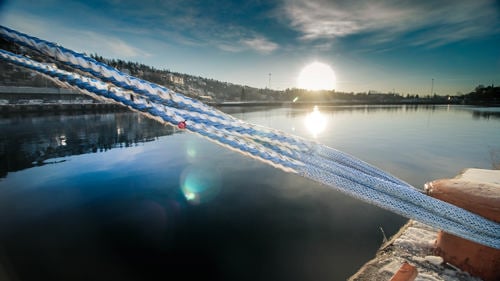Search page
We found 1729 search results.
Narrow the search result by using the filters.
You can also find relevant contacts and locations here
Showing 21-30 of 1729 search results-
Wilhelmsen insights |
![[2738x1802] FBA article image [2738x1802] FBA article image](/contentassets/276eb8e807034da9809aa6e15a9c1ed9/2738x1802-fba-article-image.jpg?height=650)
How flashback arrestors keep maritime gas welding and cutting safe
Flame or flashback arrestors used in oxy-acetylene equipment setups are a key component of safeguarding the wellbeing of personnel undertaking hot work onboard vessels and lowering the risk of damage to assets. Here we explain everything you need to know about
-
![[2048x1365] Hot work safety maintenance guide cover [2048x1365] Hot work safety maintenance guide cover](/globalassets/ships-service/welding/images/2048x1365-hot-work-safety-maintenance-guide-cover.jpg?height=281&width=500)
Hot work safety and maintenance guide
Hot work safety & maintenance guide 2023 Designed as a quick reference for vessel owners and operators, the Hot Work Safety & Maintenance Guide highlights everything you need to know from: Hot Work safety risks Industry-led safety standards for safer Hot
-
Updated

Welding Safety Inspection
We offer you a yearly safety inspection survey of the welding equipment onboard. The welding safety inspection service is a confidential assessment of the safety and operational conditions of electric arc and gas equipment onboard your vessel. Issuu pdf article
-
Smart Water Management in practice
Discover the importance of preventative maintenance and equipment upkeep with our Smart Water Management approach. Issu brochure pdf Boiler water and cooling systems play a crucial role in powering ships that drive global trade. Just as clean water is essential
-
Wilhelmsen insights |
![[2477x1858] Fuel in jar [2477x1858] Fuel in jar](/globalassets/ships-service/oil-solutions/images/2477x1858-fuel-in-jar.jpg?height=281&width=500)
Balancing performance and safe usage of chemical solutions
Making sure a product performs up to its specifications is critical to ensure performance and safety. By demonstrating stringent and careful product analysis prior to launch, this led us to a unique product innovation while reducing any risks to human health
-

Best practices for shipboard welding
Seafaring comes with its own set of challenges and risks. Accidents affect the health and wellbeing of crew, damage vessels and equipment, and cost a lot of money. This is why safety on board matters. There are many factors to maintaining maritime safety
-
Wilhelmsen insights |

An overview of the regulations and guidelines governing mooring lines
We give a snapshot of the relevant regulatory framework governing the mooring process and mooring equipment (including ropes), and the key concepts they introduce. Find out the risks and pain points of non-compliance and how best to comply with regulations
-

Refrigerant handling guide
With changing regulations and multiple procedures to remember, it is crucial to remain updated with the latest information. Stay up to date with the latest knowledge and best practices for handling refrigerants with our Refrigerant handling guide. Refrigerant
-

Differences in technology qualification for mooring ropes with Anti Snap-Back features
With various types of certificates associated with mooring ropes, navigating the differences between a statement of qualified technology and other certifications can be challenging. This article provides an overview of the main types of certificates and why
-

Avoid the risk of electrocution
Welding at sea carries a range of safety hazards—not least the ever-present risk of electrocution. The good news is that electrocution injuries are completely avoidable with the right safety precautions. Let's look at some common mistakes that heighten electrocution
-
UNITOR HEAVY DUTY HOSE 250BAR BLUE 25M
-
UNICOOL R-744 27 KG REFRIGERANT
-
TIMM TURNTABLE D90
-
BRONZE-264 3.0 X 500MM 1.7 KG
-
UNITOR™ 6M FILTER CARTRIDGE REPLACEMENT PACK
-
VIPER MID WRL KIT (25 KG CAP) FOR UNITOR™
-
NOX GUARD AUS40% UREA
-
NAVACLEAN 865 - CC BOOSTER 200 LTR
-
NAVACLEAN 888 - SEACLEAN 200 LTR
-
NAVACLEAN 873 - RUST & STAIN REMOVER 200 LTR